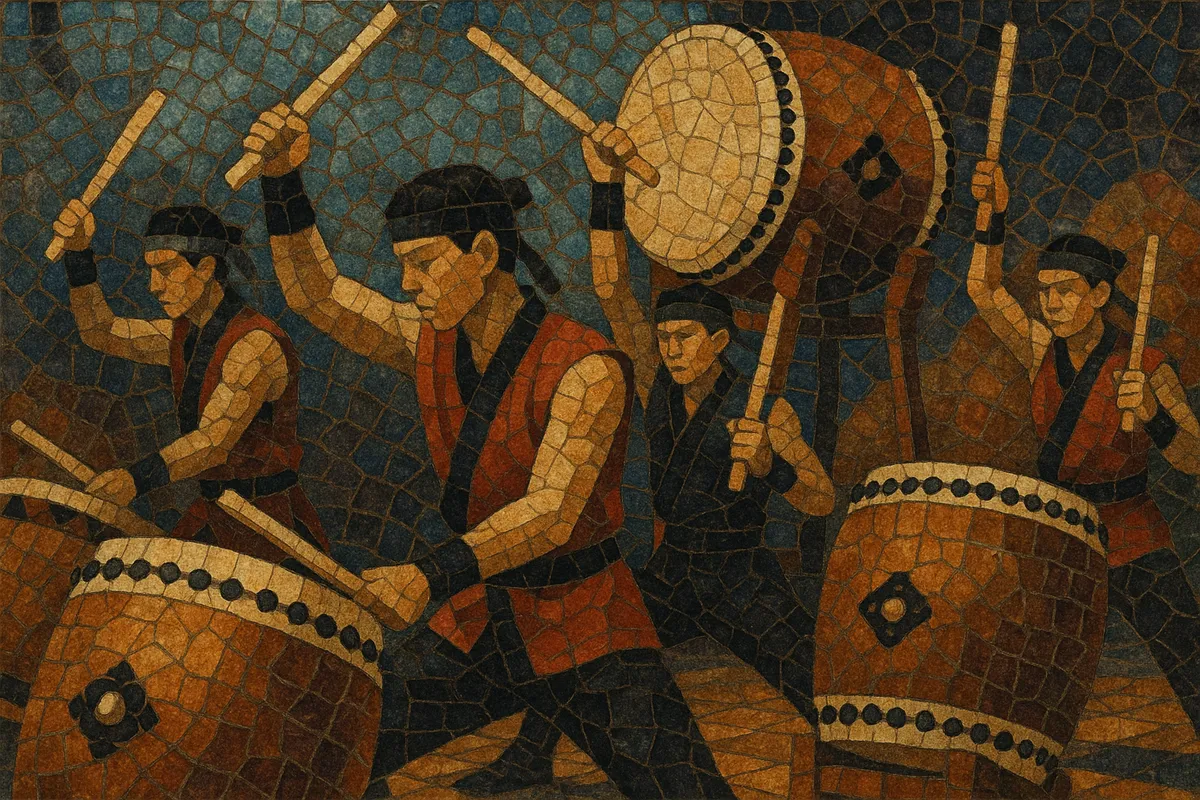Kumi-daiko is the modern ensemble style of Japanese taiko drumming in which multiple drums of differing sizes and timbres are arranged and performed together as a coordinated group.
Emerging in postwar Japan, kumi-daiko fuses traditional festival and ritual drum patterns with stage choreography, precise ensemble coordination, and concert presentation. Pieces feature layered ostinati (ji-uchi) under driving lead parts, dramatic solos, and visually codified movements (kata) that turn percussion into a kinetic, theatrical experience.
While rooted in Japanese musical practice, kumi-daiko has developed a global following and repertoire, influencing film scoring and world-fusion performance with its powerful low-frequency impact and ritualistic energy.
Kumi-daiko coalesced in postwar Japan when jazz drummer Daihachi Oguchi reorganized regional taiko materials into multi-part concert works, founding Osuwa Daiko (1951). His approach reframed taiko from a single drum accompanying festivals into an ensemble of contrasting drums performing arranged, layered parts on stage.
In 1969, Den Tagayasu formed Ondekoza on Sado Island, emphasizing rigorous physical training, theatrical staging, and touring. A 1981 split led to the creation of Kodo, which became the most internationally recognized kumi-daiko group. During this period, performers such as Eitetsu Hayashi refined solo techniques and expanded the concert repertoire and instrumentation (odaiko, nagadō-daiko, shime-daiko, okedō-daiko, atarigane, and fue).
Japanese diaspora and local arts communities established ensembles abroad—San Jose Taiko (1973), Soh Daiko (1979), and later Mugenkyo (UK), TAIKOPROJECT (US), and others. Workshops, festivals, and shared repertory helped standardize ensemble practices while enabling regional styles (e.g., Miyake-jima and yatai-bayashi interpretations) to circulate worldwide.
Today, kumi-daiko spans professional touring troupes and community groups, with repertoire ranging from traditional-inspired works to collaborations with orchestras, dance companies, and electronic artists. Its sonic and visual language—deep sub-bass resonance, interlocking rhythms, choreographed strikes—continues to influence concert music and cinematic percussion.


